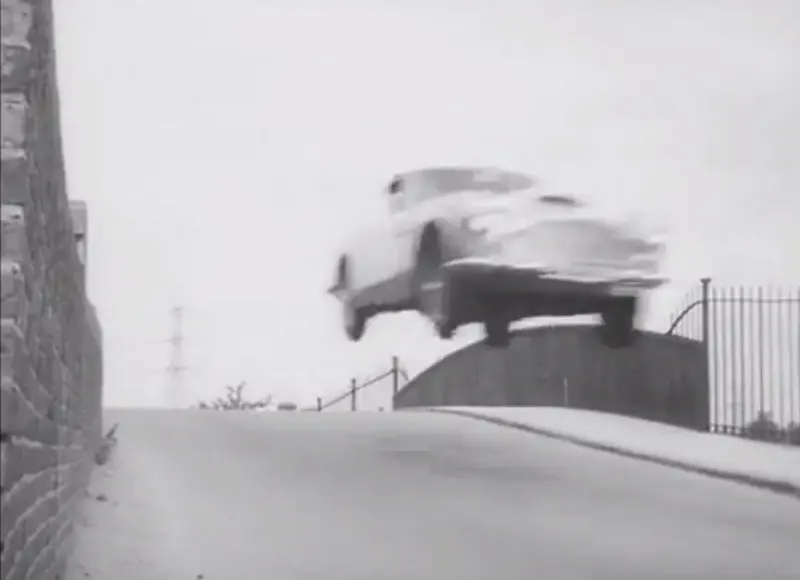MEET THE OWNER – MICHAEL RYMAN AND HIS 1967 WARTBURG KNIGHT
23 February 2023
Michael’s fascination with the Wartburg Knight commenced in 1974 when his father bought a Carmine Red Mk. 4 Tourist from Woodman’s Garage in Thundersley. Nearly 50 years later, his stupendously rare 1967 RHD example reminds British motorists of a time when such cars offered cheap and very practical transport.
VEB Automobilwerk Eisenach of East Germany introduced the Wartburg brand in 1956 with the 311. Michael points out the firm was “actually one of the very earliest and most forward-thinking manufacturers in East Germany, akin to DKW in the West”. It featured alongside the Trabant, at the 1963 London Motor Show, and by May 1964, Industria Industries sold British-market versions. 1965 saw a facelift as the 312, and the 353 1000 superseded it in June 1966 -
Four months later, a spokesperson for the company told the press: “As a result of the improved trade balance between Britain and East Germany, our import licence problems have been resolved”.
Sales began in early 1967, and UK cars bore ‘Knight’ badges. As with the 311/312, the 353 was front-wheel-drive with a separate chassis. Power was from a three-cylinder, two-stroke 991cc engine with a floor gear lever for the British market and a freewheel. The last-named provided a degree of protection for the motor from inadequate lubrication.
The brochure stated: “The body is styled in the shape of our time”, and the Knight looked relatively low-key compared with its Moskvich 408 contemporary. The Wartburg’s lines were smartly utilitarian, while its Soviet rival looked like a cross between a Sputnik and a 1963 Hillman Minx. In its homeland, customers might have to endure a waiting list of 10 years, but Industria promoted the Knight as inexpensive family transport; one early slogan was “No-one else gives you this much car for £620”.

In fact, the Knight actually cost £619 19s 9d, and for such Mini/Hillman Imp money, you gained a Ford Cortina-sized four-door five-seater saloon with 18 cubic feet of boot space. Equally importantly, the specification included reversing lamps, a heater, a cigarette lighter, two-speed wipers, electric washers, a cigarette lighter, reclining front seats and a vast tool kit.
Autocar very accurately referred to the Wartburg as offering “Value for money”, and Michael notes of its road manners: “The Wartburg is extremely composed with suspension that disgraces many moderns. Light, direct steering, but the early model’s drum brakes all round take some getting used to. Later models, (1981 onwards) had disc front/drum rear and were much better! Clearly, it’s a bit unconventional and takes the average driver some time to become acquainted. Still, once you’ve mastered fingertip inputs and allow the engine and freewheel to do their work as designed, it’s a joy to bowl along in without huge noise or discomfort. Fab seats, lots of space, a flat floor pan and loads of leg room.
Industria began importing the Tourist Estate in 1968, and by 1972 the Knight was the only new two-stroke car in this country. Three years later, the report for the London Motor Show warned, “Hurry, if you are devoted to the smooth, simple two-stroke engine. This is the last example on the British car market and no more can be imported until they have passed the new European pollution regulation”.
When sales ended in 1976, around 19,000 examples had found a home in the UK, and the Knight saloon was the nation’s cheapest new car at £949. Production of the two-stroke 353 ended in 1988, with the VW-engine ‘Wartburg 1.3’ launch. However, the last example left the Eisenach works in April 1991, with plans for a Renault-powered ‘Wartburg 1.4’ coming to nothing. Today, the surviving 353s seem to be a legacy of pre-unification Germany.
As for the Ryman Knight, it is a fascinating reminder of how people bought cars over 55 years ago. In 1967, obtaining credit was far more challenging than in 2023, and a new Wartburg might represent your life savings. In terms of any negative image, Michael makes the point “the public make too many assumptions based on perception, with no knowledge about the reality of the car”. However, he also finds: “They do often remember fondly seeing them in good numbers on our roads and that they appreciate what the East Germans managed to achieve given the resources and raw materials available at the time”.
And as Autocar wrote in 1973, there was “Nothing to touch it at the price”.
With thanks to: Michael Ryman.
